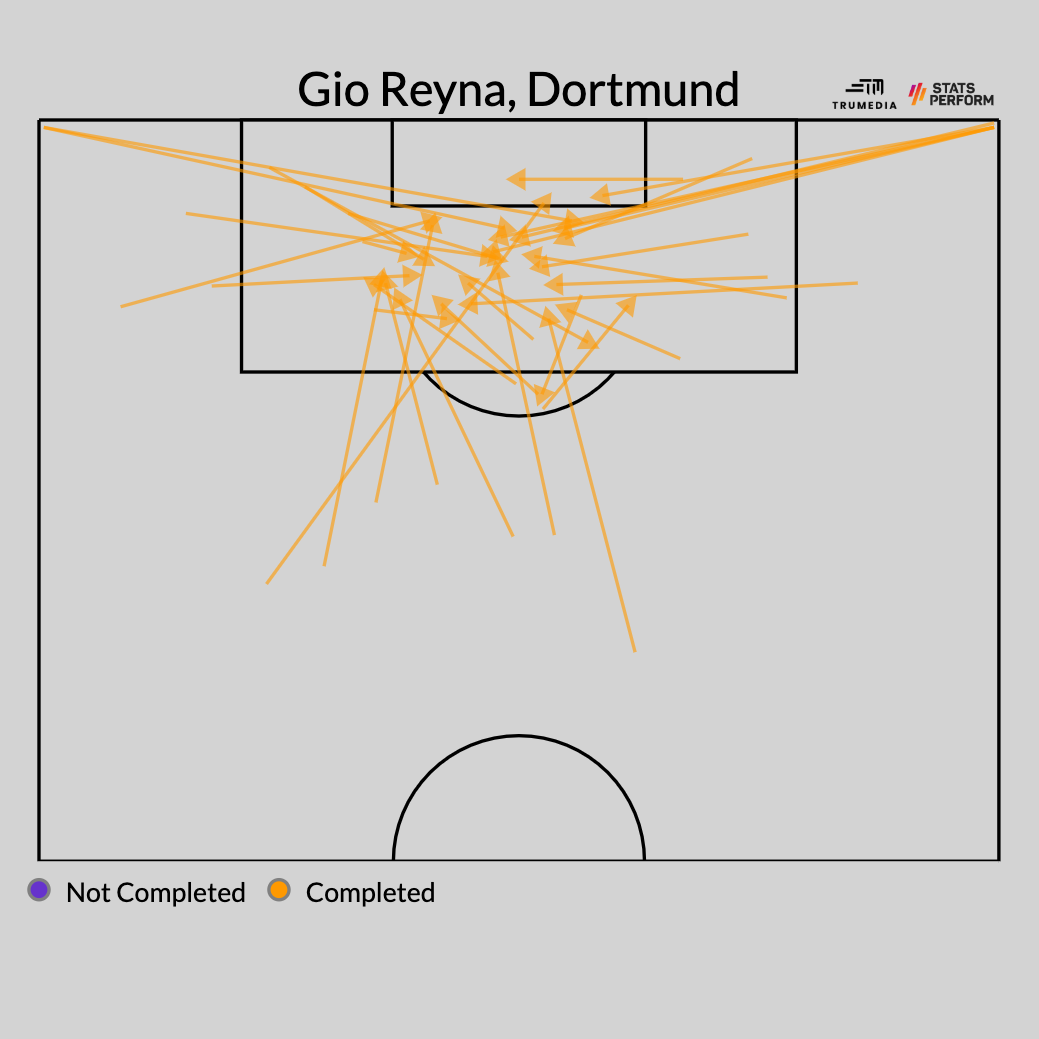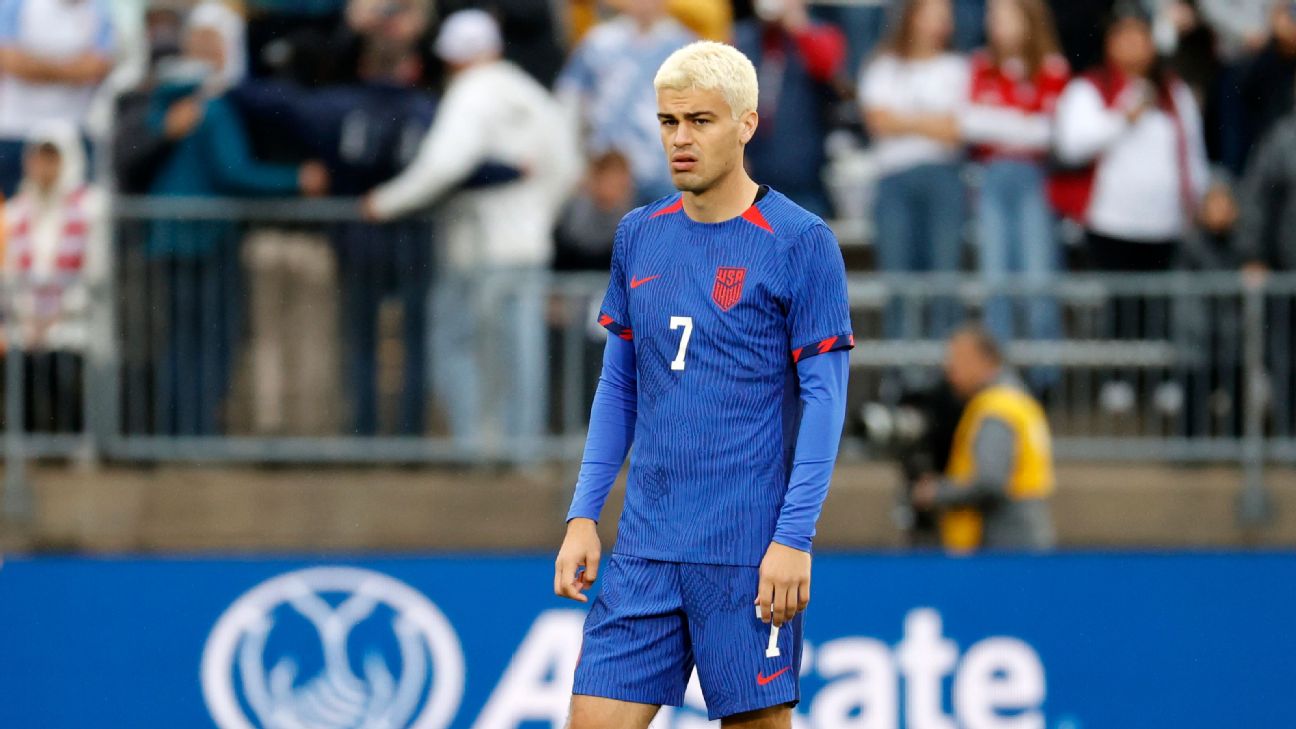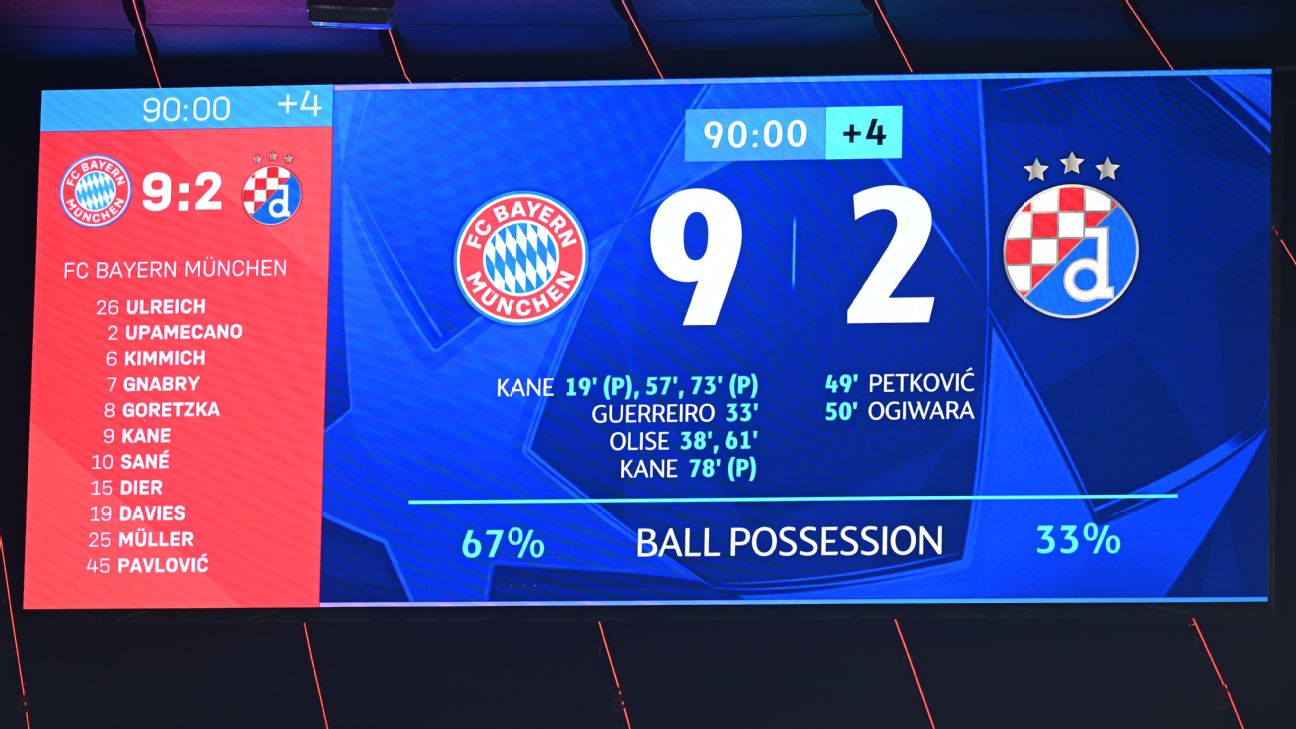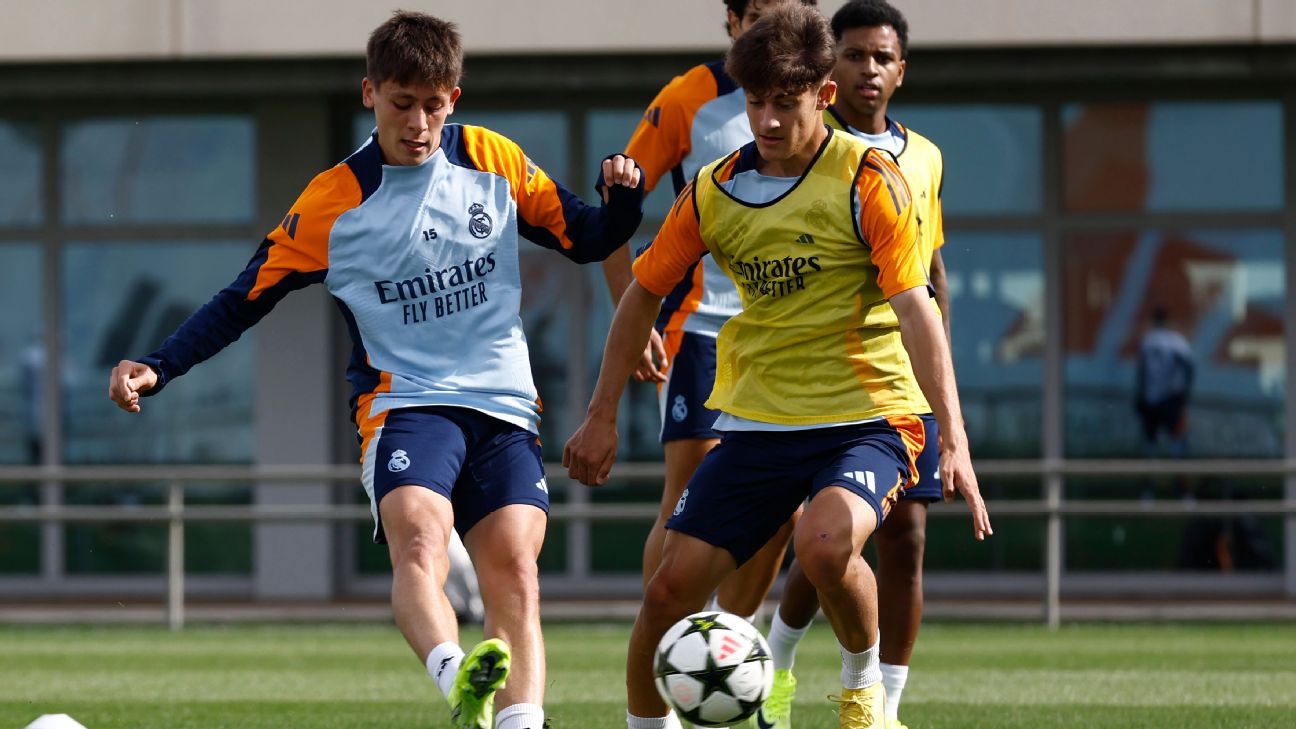Who is Gio Reyna?
The answer depends on who’s asking the question. The average American probably knows him as the kid whose parents tried to blackmail U.S. men’s national team coach Gregg Berhalter out of a job during the World Cup. But I think — I hope? — we can move on from that.
To many USMNT fans, then, Reyna represents the ceiling of the team’s potential. Imagine what might’ve happened in Qatar had Reyna been healthy and not feuding with the manager?
For all of the success of the current generation — already the most successful generation of American soccer players — the likes of Christian Pulisic and Tyler Adams are top players in large part because they’re top athletes who can cover lots of space. While Reyna isn’t lacking in athletic ability or size, he offers a different kind of promise to the other top Americans — one where a playmaker steps on the ball, slows the game down, glides past defenders and slips in a through-ball. It’s a vision of American soccer that we’ve never actually seen in the real world before.
When you ask everyone else in the soccer world, including his current club team, who Gio Reyna is, he exists as a projection more so than as an actual player. He’s a promising young talent in a competitive landscape with more of them than ever before. He’s a 20-year-old who has started 10 games for Borussia Dortmund since we started letting fans back in the stands.
In reality, none of us really know who Gio Reyna is because none of us ever really get to watch him play.
Injured players keep getting injured, and Reyna is no different
Back in May of 2021, Reyna seemed like he was the next uber-prospect at Borussia Dortmund. We already knew about Erling Haaland by then. Jadon Sancho was pumping out goals and assists at a rate that rivaled Kylian Mbappé. Already Jude Bellingham had his jersey retired by Birmingham City.
Reyna was right there with them. In fact, Reyna scored more goals, created more assists, started more matches and played more minutes than Bellingham across the 2020-21 season. At this point, Reyna was keeping elite company.
Minutes played is a powerful predictor of future performance, and it’s also a solid indicator of current quality. If you’re doing winning things on a soccer field, chances are you’re going to play. And among players who are currently still in the 20-and-under age group today, Reyna had played the fourth-most total minutes across Europe’s Big Five leagues by the end of the 2020-21 season.
Here’s the top five:
-
Eduardo Camavinga: 4,883 minutes
-
Florian Wirtz: 2,595 minutes
-
Pedri: 2,428 minutes
-
Gio Reyna: 2,326 minutes
-
Jude Bellingham: 1,701 minutes
According to the crowd-sourced valuations at the site Transfermarkt, those four other non-Reyna players are, respectively, the 17th-, 23rd-, ninth- and third-most valuable players in the world as of today. At the top, Bellingham is valued at €150 million, while Wirtz marks the low end at €85 million. The average valuation of the four players is right around €105 million.
The specific numbers matter less than how they compare to the fourth guy on the minutes list. Reyna’s current valuation sits at €25 million, which puts him in a tie with more than 60 other players for the 307th-most valuable player in the world.
What happened is that, well, nothing happened. As of today, Camavinga, Bellingham, Wirtz and Pedri all rank in the top seven for minutes played among players currently age 20 and under. Camavinga is first (8,770 minutes), Bellingham is second (7,865), Wirtz is third (6,087) and Pedri is seventh (5,468). Reyna, meanwhile, has dropped down to 16th, with 3,404 minutes — now behind a pair of other Americans in Yunus Musah and Joe Scally. Put another way, Reyna has played just over 1,000 minutes over the past two-plus seasons.
The main reason: injuries. Now, both Pedri and Wirtz have dealt with significant injury problems over the same stretch, and they’ve still each managed to double their minutes-played totals since the end of the ’20-21 season. Reyna, though, is injured so often that he suffers in multiple ways.
Sebastian Salazar and Herculez Gomez discuss Gio Reyna’s performance on his return to the USMNT vs. Germany.
Reyna misses games because he’s simply unavailable for selection. He misses games because he’s always working back from injury, so he’s rarely what any manager would consider fully fit. And he misses games because he’s so frequently out of the picture that even when he is available for selection, other Dortmund players get chosen ahead of him since they’re in front of the coach in training and matches every week.
Per Transfermarkt, Reyna has already missed 67 games due to injury across his fledgling pro career. For comparison, Camavinga has missed 13 and Bellingham four. Wirtz is at 71 and Pedri is at 66, so injuries aren’t the only explanation for Reyna’s lack of game time, but all three of them have already missed a ton of matches. Perhaps the most consistently available non-defender-or-goalkeeper of his generation is Liverpool’s Mohamed Salah. He has missed 26 matches due to injury across his entire career. He’s 11 years older than all of these guys.
How does Reyna play when he plays?
Back to that original question: Who is Gio Reyna?
In his one season as a consistent starter, Reyna mostly profiled as a “dribbler” according to Michael Imburgio’s DAVIES model, which classifies players into various roles based on their statistical profiles. A dribbler, per the model, is an “attacking player that play[s] relatively high up the pitch, usually linking play between creators and finishers, and often look to beat defenders on the dribble when they receive the ball.”
There are “direct dribblers” — guys who beat defenders and either shoot or create chances — and “wide dribblers” — guys who beat defenders and cross the ball — and Reyna looked like a bit of both. In his 600-something minutes from Dortmund last season, Reyna fit into a number of different roles, but he spent the biggest chunks of his time looking like either a direct dribbler or a progressive forward. The definition of the latter, from Imburgio: “Finishers that often drop deep and play progressive passes forward in addition to getting on the end of attacking move.”
Last season, Reyna attempted 3.5 shots per 90 minutes, nearly a two-shot increase on his 2020-21 rate of 1.7. While his goals unsustainably outpaced his expected goals (7 goals vs. 4.2 xG), his rate of non-penalty xG per-90 nearly tripled from his one season as a starter, from 0.18 to 0.51. Per FBref, over the last 365 days his xG-per-90 rate puts him into the 95th percentile among attacking midfielders and wingers across the Big Five leagues.

Except, more than half of all the xG he generated last season came from three shots — two of which were either from rebounds or knockdowns on set plays. While the instinct to crash the goal in these situations is a valuable one, it seems pretty unlikely that Reyna could drive this much proportionate goal-scoring if he were ever to regain a consistent spot in the Dortmund lineup.
The problem with any kind of statistical analysis of Reyna’s performance, then, is the same problem with any kind of analysis of his performance: He doesn’t play consistently enough for anyone to be confident about anything. Reyna’s career is rife with small on-and-off sample sizes.
However, if we look at all of his Bundesliga minutes over the past four seasons together, then we’re at least getting 3,000-plus minutes of game time. Over that stretch, he stands out in three specific areas among all players in Germany’s top tier. Per Soccerment, he’s in the 91st percentile for open-play expected assists. Here are all of his passes worth at least 0.05 expected assists, or xA, during his Dortmund career:

Reyna is also in the 94th percentile for the expected threat created from carries — which looks at where a carry begins and ends and then determines how much it increases a team’s probability of scoring a goal. And he’s in the 96th percentile for one-two passing sequences opened — which just means you’re the player who starts the one-two.
That, overall, checks out. As a mostly teenage pro, Reyna has mainly been someone who drives the ball upfield with his feet, combines in tight spaces with teammates, and creates chances for his teammates in and around the box. If you want to take the most optimistic view possible, you can look at last season, squint a little bit, and decide that he has also added goal-scoring to that profile.
I, of course, would caution against that because I’d caution against anything with Reyna, right now. At 17, he was so impressive that he looked pretty likely to become a star. In the years since, he has been so injured that it’d be hard to imagine him not continuing to get injured for the rest of his career. However, neither one negates the other. The potential for Reyna to still be a star exists, as does the potential for him to be one of those guys who never develops because he’s never healthy enough to be on the field consistently enough.
The most likely outcome, as ever, exists somewhere in between. Since 2010, 42 players have registered at least 20 non-penalty goals and assists across the Big Five leagues before their 21st birthday. Reyna is one of them. He has one fewer goal contribution than Son Heung-Min, a superstar, and one more than François Kamano, a player currently in the Saudi Pro League who you’ve almost definitely never heard of.
There’s so much that can still happen. Gio Reyna just has to play.



